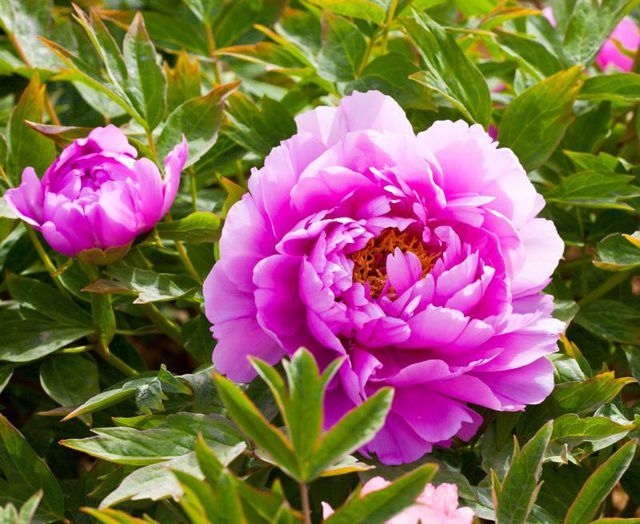Bulbs
Flower Basics
Flower Beds & Specialty Gardens
Flower Garden
Garden Furniture
Garden Gnomes
Garden Seeds
Garden Sheds
Garden Statues
Garden Tools & Supplies
Gardening Basics
Green & Organic
Groundcovers & Vines
Growing Annuals
Growing Basil
Growing Beans
Growing Berries
Growing Blueberries
Growing Cactus
Growing Corn
Growing Cotton
Growing Edibles
Growing Flowers
Growing Garlic
Growing Grapes
Growing Grass
Growing Herbs
Growing Jasmine
Growing Mint
Growing Mushrooms
Orchids
Growing Peanuts
Growing Perennials
Growing Plants
Growing Rosemary
Growing Roses
Growing Strawberries
Growing Sunflowers
Growing Thyme
Growing Tomatoes
Growing Tulips
Growing Vegetables
Herb Basics
Herb Garden
Indoor Growing
Landscaping Basics
Landscaping Patios
Landscaping Plants
Landscaping Shrubs
Landscaping Trees
Landscaping Walks & Pathways
Lawn Basics
Lawn Maintenance
Lawn Mowers
Lawn Ornaments
Lawn Planting
Lawn Tools
Outdoor Growing
Overall Landscape Planning
Pests, Weeds & Problems
Plant Basics
Rock Garden
Rose Garden
Shrubs
Soil
Specialty Gardens
Trees
Vegetable Garden
Yard Maintenance
How to Identify Peony Plant Diseases
How to Identify Peony Plant Diseases. Gardeners cultivate two forms of peonies. The tree peony, (Paeonia suffruticosa) which grows between 4 and 6 feet high, is hardy in U.S. Department of Agriculture plant hardiness zones 4 through 8. Herbaceous garden peonies (Paeonia officinalis) grow between 2 and 4 feet tall, and are hardy in USDA zones 8...

Gardeners cultivate two forms of peonies. The tree peony, (Paeonia suffruticosa) which grows between 4 and 6 feet high, is hardy in U.S. Department of Agriculture plant hardiness zones 4 through 8. Herbaceous garden peonies (Paeonia officinalis) grow between 2 and 4 feet tall, and are hardy in USDA zones 8 through 10. Peonies are generally hardy and easy to care for, but fungal and bacterial infections can cause problems ranging from cosmetic damage to death.
Gray Mold: Botrytis Blight
The most common disease of garden peonies, the Botrytis paeoniae fungus attacks young shoots, which wilt and collapse. A brownish-black mass of spores appears in the rotting portions of the plant, and grayish mold covers the stalk slightly above ground level. Blossoms may turn black, brown, or become covered in gray mold.
Fungicides offer little help once peonies have developed botrytis infections, but you can help protect plants with a fungicide such as thiophanate methyl or chlorothalonil to protect them from botrytis blight. Spray emerging peonies in spring when the first tips appear, and repeat every two weeks until the middle of summer, following label directions, suggests the Missouri Botanical Garden.
Powdery Mildew
The Erysiphe polygoni fungus creates small, rounded white spots on peony foliage. The spots eventually grow until the entire leaf is covered in a grayish-white fungus. Leaves become stunted and distorted, and eventually fall from the plant. This fungus overwinters on fallen leaves. In spring, wind and water transmit the spores from the fallen leaves to healthy foliage. Although powdery mildew is unattractive, it rarely kills peonies. Avoid problems by planting peonies in full sunlight, and allow enough space between plants so air can freely circulate. Remove fallen leaves each autumn to help prevent reinfection.
White Mold
The Sclerotium sclerotiorum fungus causes white mold. The diseased part of the stem fades to a pale tan and becomes shriveled and stringy, and a fluffy white fungus appears. Small black fungal bodies called sclerotia form inside the stem. Prune away diseased plant parts and discard or destroy the cuttings. Pruning tools can spread the disease from infected to healthy plants. The University of Florida IFAS Extension recommends disinfecting pruning shears by soaking them for at least five minutes in a mixture of three parts water to one part bleach, or an equal mixture of rubbing alcohol and water.
Verticillium Wilt
Verticillium albo-atrum is a soil-borne fungus that attacks the water transport system inside peonies and other plants. The crown shows few if any symptoms, but some of the shoots wilt. Since water cannot get to all parts of the plant, the peony eventually dies. This fungus is highly contagious and very difficult to eradicate. Remove any infected plants, and do not replant peonies or any other plant that is susceptible to verticillium wilt in the infected area.
Other Diseases
Peonies may suffer from root rot if they are planted in constantly wet or poorly drained soil. Infected peonies are stunted and fail to grow properly. Eventually they turn yellow, wilt and die. Some root rot infections also create sunken, diseased areas of tissue called cankers on the stems. Most of the damage occurs in the roots, so fungicides have limited benefits. Remove and destroy the diseased peonies.
Leaf spot infections are also common. The Xanthomonas bacterium and Cladosporium paeoniae fungi both cause unsightly leaf spots to appear on the leaves and stems. Avoid wetting peony leaves, and remove any plant debris at the end of the season.